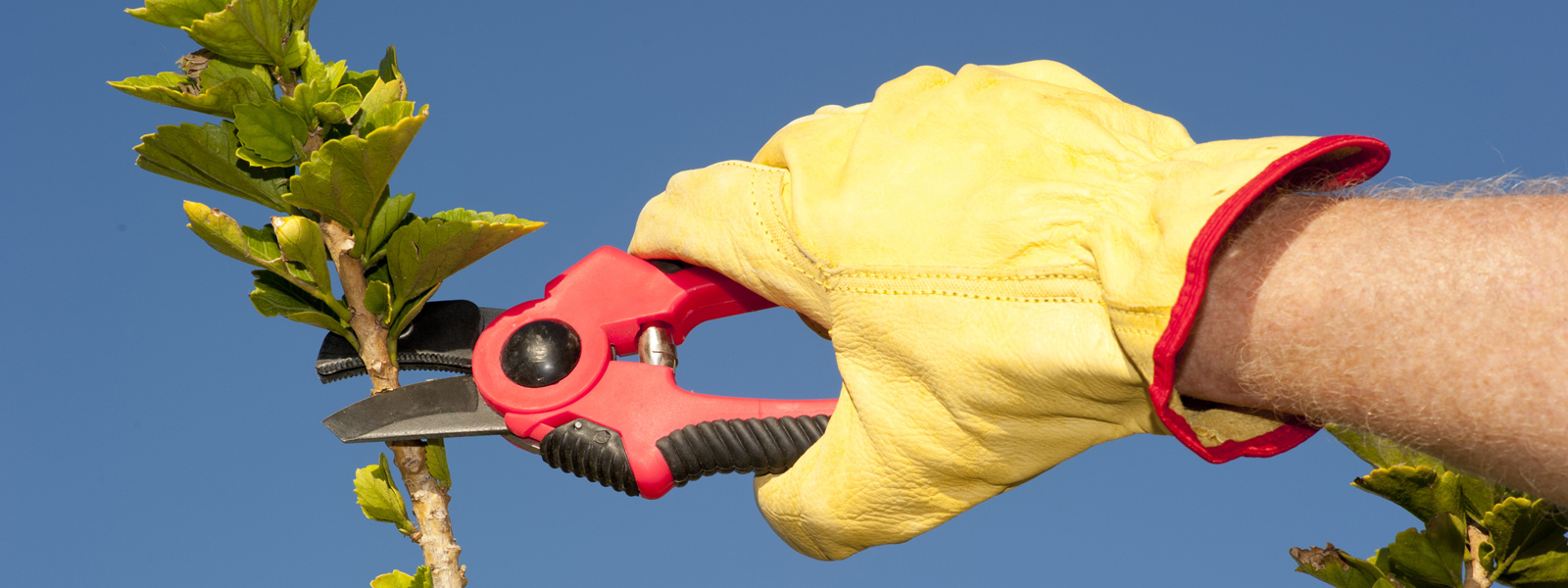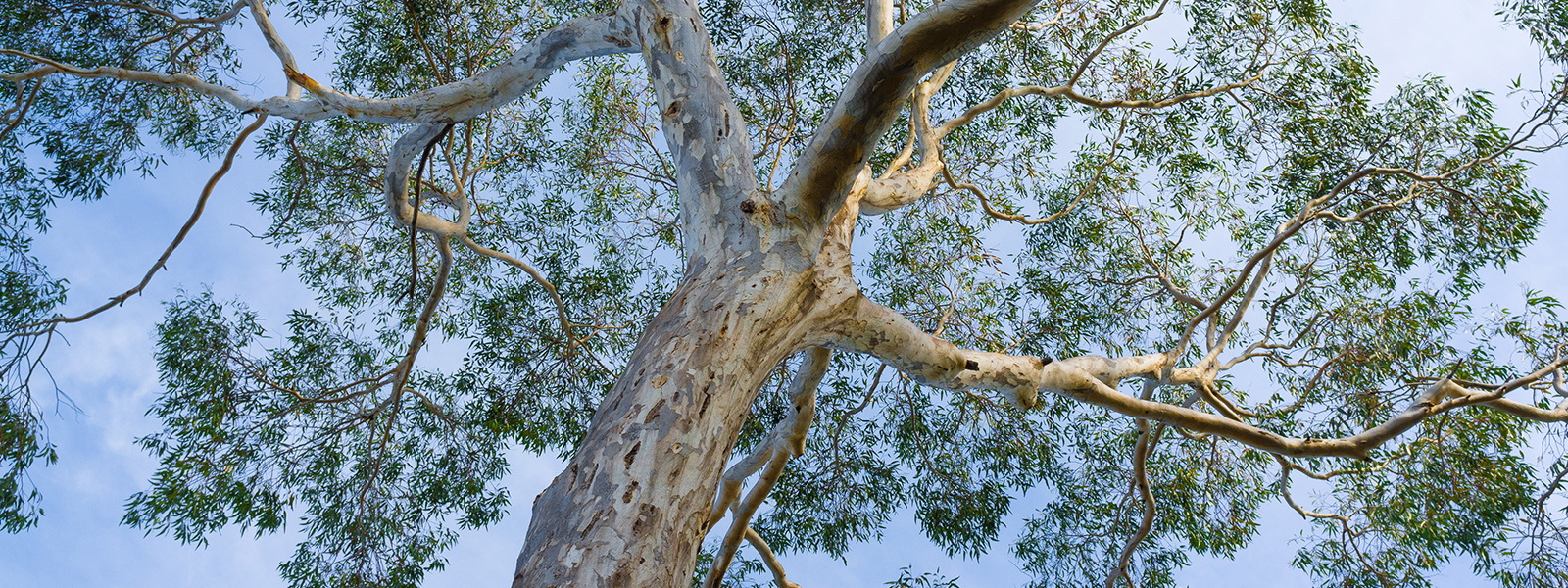When to prune eucalyptus
Formative pruning, coppicing and pollarding of eucalyptus are best carried out in late winter to early spring (February to March), just before plants are actively in growth.
How to prune eucalyptus
Formative pruning as a standard tree
Standard trees have a clear trunk and a head, or canopy, of branches. Young eucalyptus can be grown as standards with a 1-2m (3¼ -6½ ft) trunk.
Eucalyptus grow with a clear central leading branch that grows upwards ahead of the other branches. It is important not to cut this central leader, as this could spoil the final shape of the tree.
Suitable for: E. coccifera, E. dalrympleana, E. gunnii, E. parvifolia, E. pauciflora, E. pulvurulentaand E. urnigera.
Year one
- Remove all side branches from the lower third of the main stem
- Shorten by half all the sideshoots on the middle third of the main stem
- Leave the sideshoots on the top third of the main stem unpruned, apart from the removal of dead, diseased or damaged growth
- Cut to outward facing buds, so that the resulting growth extends outwards rather than into the centre of the tree
Year two
- Remove completely the side shoots that were shortened by half in year one (which should be now be in the lower third of the tree)
- Shorten by half the sideshoots on the middle third of the tree
- Remove any crossing or misplaced branches in the upper third of the tree
Year three
- Follow the same steps as for year two
Years four and five
- Clear the trunk of side branches to the height desired
- Continue to remove any crossing, dead, diseased or misplaced branches from the canopy
Formative pruning as a multi-stemmed bush
This method is particularly suitable for two-year-old trees of Eucalyptus gunnii, E. globulus, E. dalrympleana and E. pauciflora, as it shows off their attractive, rounded juvenile foliage.
Year one
- Cut the main stem of a two-year-old tree straight across at the desired height, cutting as low as 8cm (3in) from ground level if required. Trim the wound so that there are no rough edges
Year two
- Multiple branches should have regenerated from the wound and from below ground level. Select three or four of these (choosing strong, well-spaced branches), and remove all other branches completely, cutting them back to the base
Year three and onwards
- Allow sideshoots to develop from the chosen branches, removing only those sideshoots that are too low and dragging on the ground, or are crossing, rubbing or otherwise badly placed
- Remove any excess new stems arising from the base
- Occasional thinning of congested side branches may be necessary as the bush matures
- Established trees require little pruning other than the removal of any dead wood.


